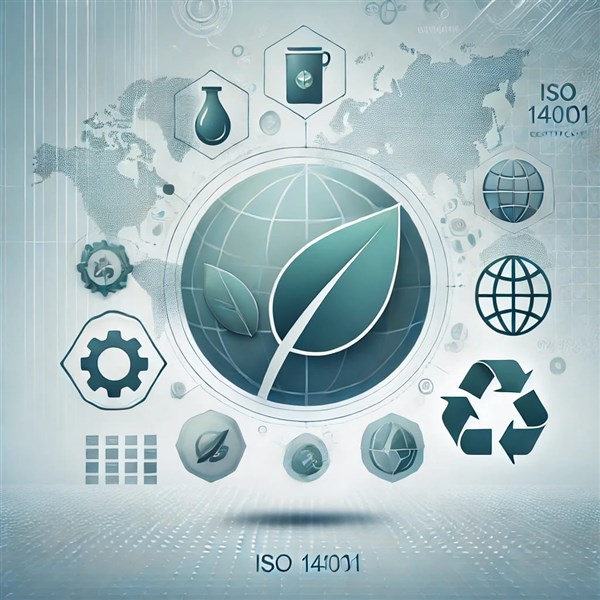
In today’s fast-paced and increasingly interconnected world, environmental sustainability has become a significant concern for businesses, governments, and individuals alike. As companies strive to minimize their environmental impact while maintaining efficiency and profitability, adopting systematic approaches to environmental management has gained paramount importance. One such approach is ISO 14001 certification, an internationally recognized standard that guides organizations in developing and implementing effective environmental management systems (EMS). In this comprehensive guide, we will explore what ISO 14001 certification entails, its benefits, key requirements, and how organizations can achieve it.
What is ISO 14001?
ISO 14001 is part of the ISO 14000 family of standards that address various aspects of environmental management. Specifically, ISO 14001:2015 sets out the criteria for an effective environmental management system. This standard provides a framework that organizations can follow to improve their environmental performance through more efficient use of resources and reduction of waste.
Developed by the International Organization for Standardization (ISO), the ISO 14001 standard is applicable to any organization, regardless of its size, type, or sector. Whether you're a small startup or a large multinational corporation, ISO 14001 provides guidelines that can help you minimize your environmental impact and comply with applicable laws and regulations.
Importance of ISO 14001 Certification
1. Enhances Environmental Performance
At the core of ISO 14001 certification is the commitment to improving environmental performance. Organizations that implement an effective EMS are better equipped to identify their environmental impact and take steps to reduce it. This leads to a decrease in waste generation, pollution, and resource depletion, contributing to overall sustainability.
2. Regulatory Compliance
Compliance with environmental regulations is mandatory for organizations. However, keeping up with these regulations can be complex and challenging. ISO 14001 certification helps organizations establish processes to ensure compliance with local, national, and international environmental laws and regulations. By having a robust EMS in place, organizations can mitigate the risk of legal issues and potential fines.
3. Cost Reduction
By implementing ISO 14001, organizations can significantly reduce operational costs. An effective EMS helps identify inefficiencies and waste, allowing businesses to optimize resource use, reduce energy consumption, and lower waste disposal costs. These improvements often lead to substantial cost savings over time.
4. Improved Brand Reputation
In today's market, consumers are increasingly environmentally conscious. Organizations that demonstrate a commitment to sustainability through ISO 14001 certification can enhance their brand reputation. This can lead to increased customer loyalty and attract environmentally conscious consumers who prefer to support businesses that prioritize sustainability.
5. Competitive Advantage
ISO 14001 certification can set an organization apart from its competitors. Many businesses now require their suppliers to have ISO 14001 certification as part of their procurement processes. By achieving certification, organizations can gain a competitive edge in the market and expand their business opportunities.
6. Stakeholder Engagement
ISO 14001 certification encourages organizations to engage with stakeholders, including employees, customers, suppliers, and the local community. Involving stakeholders in the EMS can lead to improved communication, better understanding of environmental issues, and collaborative efforts to address them.
Key Requirements of ISO 14001 Certification
ISO 14001:2015 provides a structured approach for developing and implementing an EMS. The standard is based on a Plan-Do-Check-Act (PDCA) model, which ensures continuous improvement. The key requirements include:
1. Context of the Organization
Organizations must understand the context in which they operate, including internal and external factors that can impact their environmental management. This involves identifying the needs and expectations of relevant stakeholders and defining the scope of the EMS.
2. Leadership and Commitment
Top management must demonstrate leadership and commitment to the EMS. This includes establishing an environmental policy, ensuring that environmental objectives are aligned with the organization's strategic direction, and providing the necessary resources for effective implementation.
3. Planning
Organizations must identify environmental aspects and impacts associated with their activities, products, and services. They should also assess risks and opportunities, set measurable environmental objectives, and develop plans to achieve them.
4. Support
Adequate resources, including personnel, training, infrastructure, and technology, must be provided to implement the EMS effectively. Organizations should ensure that employees are aware of their roles and responsibilities regarding environmental management.
5. Operation
Organizations must establish processes to control their environmental aspects and manage risks. This includes implementing procedures, work instructions, and operational controls to ensure compliance with environmental regulations and objectives.
6. Performance Evaluation
Monitoring, measurement, analysis, and evaluation of the EMS are crucial for assessing its effectiveness. Organizations should regularly review their environmental performance against set objectives and compliance obligations.
7. Improvement
ISO 14001 emphasizes the importance of continual improvement. Organizations must establish processes for identifying non-conformities, implementing corrective actions, and promoting a culture of continual improvement within the organization.
Steps to Achieve ISO 14001 Certification
Achieving ISO 14001 certification involves several key steps:
1. Initial Assessment
Begin with an initial assessment of your organization's current environmental practices. Identify areas for improvement and determine whether you already meet some of the ISO 14001 requirements.
2. Training and Awareness
Provide training for employees to raise awareness of environmental issues and the importance of the EMS. Ensure that staff understands their roles and responsibilities within the system.
3. Developing the EMS
Create an environmental management system that aligns with the ISO 14001 requirements. This involves documenting policies, procedures, and processes related to environmental management.
4. Implementation
Implement the EMS throughout the organization. Ensure that all employees are aware of the new processes and their roles in maintaining the system.
5. Internal Audits
Conduct internal audits to assess the effectiveness of the EMS and identify areas for improvement. This helps ensure that the system is functioning as intended and complies with ISO 14001 standards.
6. Management Review
Hold management reviews to evaluate the EMS's performance, identify opportunities for improvement, and ensure alignment with organizational goals.
7. Certification Audit
Engage an accredited certification body to conduct an external audit. If the organization meets all ISO 14001 requirements, the certification body will issue an ISO 14001 certificate.
8. Continual Improvement
After obtaining certification, organizations should focus on continual improvement by regularly reviewing and updating the EMS to adapt to changing environmental conditions and regulations.
Conclusion
ISO 14001 certification represents a commitment to environmental management and sustainability. By implementing an effective EMS, organizations can enhance their environmental performance, comply with regulations, reduce costs, and improve their brand reputation. As the global focus on sustainability continues to grow, achieving ISO 14001 certification can position organizations as leaders in their industries, demonstrating their commitment to protecting the environment while achieving business success.
Pursuing ISO 14001 certification is not just about compliance; it’s about creating a culture of responsibility and sustainability that benefits both the organization and the planet. As more businesses embrace this standard, the collective impact on environmental protection can be significant, driving positive change in the global economy.
Koenig Solutions is a leading IT training company offering certifications in top technology courses. It provides comprehensive training for the ISO 14001 Certification that will help you understand the fundamentals of the EMS and how to implement it in your organization. The training includes interactive sessions, case studies, and hands-on exercises to ensure that you can apply what you learn immediately.
In conclusion, ISO 14001 Certification is an excellent way for organizations to demonstrate their commitment to environmental sustainability. Getting trained in this certification provides professionals with the knowledge and skills to implement an effective EMS in their organizations.







COMMENT